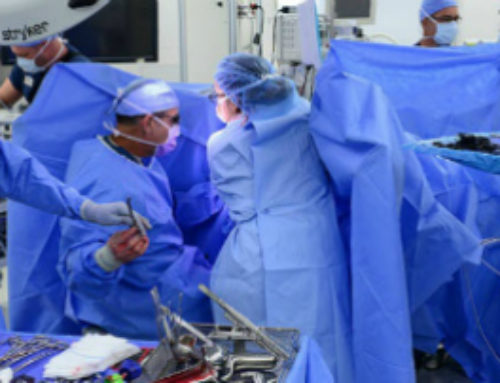The vast majority of medical malpractice lawsuits are premised on the general theory of negligence, which holds that professionals (including doctors and nurses) owe their clients a specific set of duties. Medical professionals, in particular, are obligated to uphold the standards and best practices widely-accepted within the healthcare community.
Defenses To General Negligence Claims
While cases of medical negligence are unique in many ways, they are still fundamentally cases of negligence. As a result, medical professionals who face malpractice claims will have at their disposal a number of possible defenses available to all negligence defendants.

Challenging The Four Elements Of Medical Negligence
In order to prove medical negligence, plaintiffs will have to demonstrate four essential facts:
- a duty of care existed between the medical professional and the plaintiff
- the professional violated the standard of care
- the defendant’s medical negligence caused the plaintiff’s injuries
- the plaintiff’s injuries resulted in compensable financial damages
Likewise, defendants will be able to dispute any one of these four facts in their own defense, arguing, for example, that a doctor-patient relationship did not exist or that their care was in compliance with the medical profession’s accepted standards. Historically, some of these defenses have proven more successful than others. Courts have been hesitant to approve of defense arguments in which physicians challenge the existence of a doctor-patient relationship.
Good Samaritan Laws
Many states, including Pennsylvania, have passed Good Samaritan laws, designed to protect people who help others during medical emergencies from civil and criminal liability. These laws can shield physicians or doctors who provide medical care in emergencies when the medical professional usually has no legal responsibility (formal doctor-patient relationship) to assist a person. This legal protection extends to cases in which a doctor commits medical negligence, although some states make an exception, allowing patients to sue outside of the general Good Samaritan restriction, for instances of gross negligence.
No Standard Of Care Violation
More effective are arguments in which defendants dispute that a violation of medical standards took place. Just like plaintiffs, defendants will marshal expert witnesses in their defense, calling on other medical professionals to show that their choices during diagnosis or treatment were acceptable.
Plaintiffs, however, have the burden of proof in this context. Thus, the evidence that demonstrates a violation of standard practices will have to outweigh any evidence that would lead a judge or jury to the opposite conclusion. Where the evidence on both sides of the argument is equal, the defendant will generally prevail.
The “Substantial Minority” Defense
Most plaintiffs attempt to prove that their doctor or nurse deviated from the standard practices that medical professionals follow in similar circumstances. Diverging from the medical consensus, though, is not necessarily evidence of malpractice. In some cases, doctors turn to treatment methods that, while different from more commonly-used therapies, are not entirely out of bounds. Many defendants turn to a “substantial minority” defense, arguing that a significant, though not overwhelming, group of respected physicians support their diagnostic or therapeutic techniques.
Assumed Risk
Most diagnostic and treatment methods come with some form of risk. Thankfully, the vast majority of physicians require that patients consent to a procedure before it is performed, after being apprised of the treatment’s potential risks. In fact, many hospitals ask patients to sign consent to treat forms prior to medical care. Along with thorough consultation on a treatment’s risks, this patient consent can, in theory, be used as a defense argument.
In reality, the assumption of risk rarely comes up in medical malpractice lawsuits. In order to prevail, defendants have to prove both that the patient had knowledge of the potential risk and voluntarily chose to accept the risk. Proving both elements is very difficult in practice, because most patients, however aware they may be of their treatment’s risks, don’t really have a choice between medical therapies. Without having presented multiple treatment options, and allowing a patient to choose among them, it’s hard for physicians to show that their patient accepted a procedure’s risks of their own accord.
Moreover, the assumption of risk defense doesn’t hold any water in cases of gross negligence – outright medical errors and mistakes. No patient is expected to assume the risks of a doctor’s blatant carelessness.
No Causal Relationship
The causal relationship between a plaintiff’s injuries and a medical professional’s negligence is one of the most frequently-disputed aspects of malpractice lawsuits. This is especially true in cases of cancer misdiagnosis, where defendants often argue that a plaintiff’s pain and suffering, or death, were simply caused by their disease, rather than a mistake in diagnosis or treatment.
Traditionally, Courts took this defense very seriously, holding that a plaintiff could only recover damages if the patient could prove that their chances of survival would have been significantly higher if diagnosis and treatment had come earlier. In recent years, many jurisdictions have relaxed their standards for causation, allowing plaintiffs to pursue malpractice claims when a medical professional’s negligence blocked off access to a better chance of survival or recovery. Faced by this legal argument, defendants are forced to minimize the effect their delayed diagnosis or misdiagnosis had on a patient’s survival.
Contributory & Comparative Negligence
In some cases, patients contribute to their own injuries, despite having also been harmed by a doctor or nurse’s negligence. Physicians who can show that their patient’s injuries would not have occurred in the absence of a negligent act on the plaintiff’s part may have a valid defense against the claim. If a patient, for example, failed to follow doctor’s orders, the physician could be off the hook for any resulting injuries.
This isn’t always in iron-clad defense, though. It depends on where your case is filed. Some states follow a traditional rule, known as contributory negligence, which only allows plaintiffs to secure damages when they are completely free of fault or negligence themselves.
Pennsylvania: Contributory Negligence Does Not Bar Recovery
In other states, a doctrine called comparative negligence is used. Under this legal theory, a plaintiff’s own negligent acts are taken into account, but don’t eliminate their right to pursue compensation. Instead, the judge or jury will reduce the amount of awarded damages in line with how much the plaintiff’s negligence contributed to their injuries.
Pennsylvania is a comparative negligence state. According to Pennsylvania General Assembly Statute §7102, “the fact that the plaintiff may have been guilty of contributory negligence shall not bar a recovery by the plaintiff or his legal representative.”
Avoidable Consequences
Some defendants choose to argue that a patient could have taken reasonable steps to mitigate or prevent their own injuries. In employing this argument, which may be able to reduce the amount of awarded damages, defendants are not required to deny negligence on their own part. Most states agree that injured patients, even those who have been harmed by malpractice, should exercise all reasonable care in order to reduce the consequences of a doctor’s negligence. When patients fail to do so, leading to more serious forms of injury, their awards can be lowered.
Damages & The Collateral Source Rule
Ultimately, every defendant’s primary goal is to prevent monetary damages from being awarded or reduce the amount of those damages as much as possible. In some states, defendants are allowed to introduce evidence that an injured patient has already secured compensation from “collateral sources,” like an insurance policy or government benefit program. This defense can be used to reduce, but not eliminate, the physician’s own financial liability.
Some jurisdictions, however, have made this defense impossible, holding that compensation from collateral sources cannot be admitted as evidence in a case. Pennsylvania, for example, has a long-standing legal tradition that is friendly to plaintiffs, embodied in the 1995 Pennsylvania Supreme Court decision Johnson v. Beane: “payments from a collateral source shall not diminish the damages otherwise recoverable from the wrongdoer.”
Statute Of Limitations
Many medical malpractice defendants attempt to show that the plaintiff has missed out on their chance to file suit, arguing that the state’s statute of limitations for medical negligence has already run out. In Pennsylvania, injured patients have a baseline of two years, beginning on the date of actual negligence, to file their lawsuit. However, a second legal theory, known as the “discovery rule,” can extend this time limit further. The discovery rule allows the statute of limitations to be paused until a patient discovers the potential connection between malpractice and their injuries. No malpractice claim, though, can be filed longer than seven years after the actual negligence occurred, except for cases in which foreign objects are left inside a patient’s body.
Defendants can use the statute of limitations to their advantage in a number of different ways, depending on how the statute is being applied in a specific case. When the discovery rule is applicable, for example, the defendant can attempt to present evidence that the patient discovered the alleged malpractice within the original two-year statute of limitations, but failed to file their claim in a timely manner.







Leave A Comment